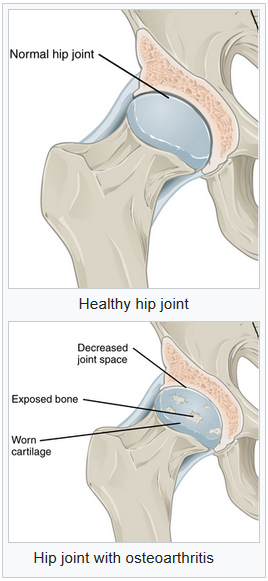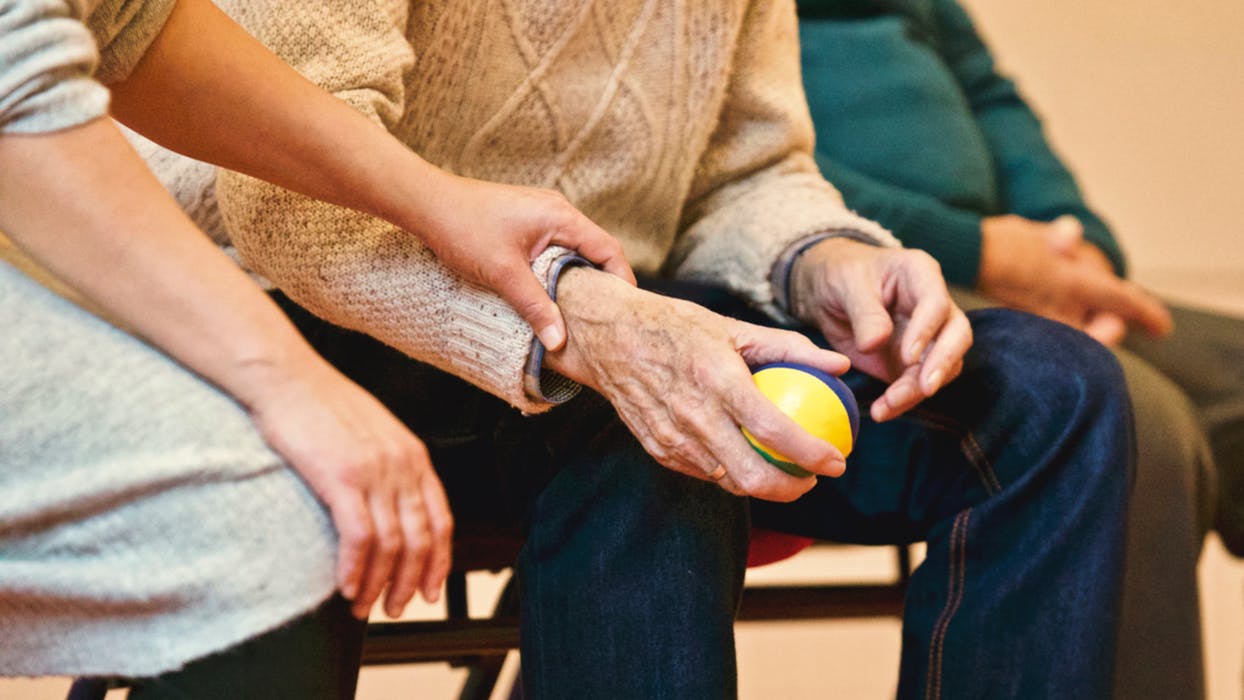nalco group
bone, muscle & joint pain physio
BOOK NOW / WHATSAPP ABOUT YOUR PAIN OR INJURY
- NOVENA 10 Sinaran Drive, Novena Medical Center #10-09, Singapore 307506
- TAMPINES 9 Tampines Grande #01-20 Singapore 528735
- SERANGOON 265 Serangoon Central Drive #04-269 Singapore 550265
Home > Blog > Physiotherapy > Osteoarthritis (OA) Physiotherapy
Osteoarthritis (OA) Physiotherapy

"Arthritis" is a general, umbrella term used to describe inflammation of the joints.
Osteoarthritis (OA) is the most common form of arthritis and usually is caused by the deterioration (wear-and-tear or acute) of a joint. Most of the time, it is the weight-bearing joints are mostly/firstly affected, with the knee and the hip being the most common.
In America, there is an estimated 27 million Americans who have osteoarthritis (mild to severe), and according to the American CDC,
- 50% of Americans may develop osteoarthritic knees by age 85
- 25% of Americans may develop osteoarthritic hips in their life
Until age 50, men and women are equally affected by osteoarthritis. But once after age 50, women are more affected more than men.
Point to note is that:
- 21% of patients who are overweight are diagnosed with arthritis
- 31% of patients who are obese are diagnosed with arthritis
Osteoarthritis affects work and daily living, and is one of the most common causes of disability. Though it may not always require surgery (such as joint replacement), it is estimated that total joint replacement in US will increase 174% for hips and 673% for knees by year 2030.
What our senior physiotherapists do for patients with osteoarthritis is
- help patients understand OA and its complications
- provide physiotherapy treatments to lessen OA-related pains and improve movement
- offer education about obesity and healthy lifestyle choices.
Research has shown that light to moderate activities such as walking, biking, and swimming can provide more benefits than harm to your joints, and promote weight loss. One study showed that just an 11-pound (about 5 kg) weight loss reduced the risk of OA in the women studied.
More Information on Osteoarthritis:
What is Osteoarthritis?

All our bones are connected to other bones at joints such as wrists, shoulders, hips, knees etc. There is a rubbery substance called cartilage at these joints which help to decrease impact and friction as the joints move. There is an additional oily substance called synovial fluid within the joint which also decreases impact and friction.
Over time, these cartilage and synovial fluids can breakdown and run out, causing the bony ends to meet and rub against each other during movement. This can cause pain, and over time it damages and destroys the bone and cartilage in the joint.
Unfortunately, the exact conclusive cause of osteoarthritis is unknown. Current research points to aging as the main cause. Factors that may increase your risk for OA include:
- Age. Growing older increases your risk for developing OA because degeneration and aging of the cartilage and synovial fluid increases over time.
- Genetics. Research indicates that some people's bodies have difficulty forming cartilage. Individuals can pass this problem on to their children.
- Past injury. Individuals with prior injury to a specific joint, especially a weight-bearing joint (such as the hip or knee), are at increased risk for developing OA.
- Occupation. Jobs that require repetitive squatting, bending, and twisting (eg, construction, landscaping, childcare) are risk factors for OA. People who perform jobs that require prolonged kneeling (eg, miners, flooring specialists) also are at high risk.
- Sports. Athletes who repeatedly use a specific joint in extreme ways (eg, pitchers, football linemen, ballet dancers, runners) and those who engage in high-impact joint loading done in a repetitive manner (eg, running, jumping, landing on hard surfaces) may increase their risk for developing OA later in life.
- Obesity. Being overweight causes increased stress to the weight-bearing joints (such as knees), increasing the risk for development of OA.
How Does osteoarthritis Feel like?
Most of the time osteoarthritis causes joint pain and joint stiffness in the affected joint. Common symptoms include:
- Stiffness in the joint, especially in the morning, which eases in less than 30 minutes
- Stiffness in the joint after sitting or lying down for long periods
- Pain during activities that taxes the affected joints and is relieved by rest
- Crepitus in joints: Cracking, creaking, crunching, or other types of joint noise
- Pain when you press on the joint
- Increased bone growth around the joint that you may be able to feel
Caution:
Swelling and warmth around the
joint is not typically seen with osteoarthritis and may indicate a different condition
or signs of inflammation (such as traumatic injuries, rheumatoid arthritis, etc). Please consult a doctor if you have swelling,
redness, and warmth in or around a joint.
How Is osteoarthritis Diagnosed?
Osteoarthritis is typically diagnosed by your doctor using an X-ray, but there are signs that may lead our senior physiotherapist to suspect you have OA.
Symptoms such as
- joint stiffness
- difficulty moving
- crepitus: joint cracking, creaking,
or crunching and
- joint pain that is relieved with rest are typical symptoms
Having at least 3 of the following 5 criteria increases suspicion of OA diagnosis:
- Age >50 years
- Stiffness <30 minutes
- Crepitus (a grinding/crunching sound emitted from the joint with movement)
- Bone tenderness
- Bony enlargement
How Can our senior PhysioTherapist Help you?

Physiotherapy treatment has proven to be an effective treatment for osteoarthritis, and may help you avoid surgery and use of prescription painkillers. Although the symptoms and progression of OA are different for each person, starting an individualized physiotherapy and exercise program and addressing risk factors can help relieve your symptoms and slow the condition's advance.
Our senior physiotherapist may:
- Perform a thorough examination to determine your symptoms.
- Observe what activities are difficult for you.
- Design an individualized exercise program to address your specific needs and improve your movement.
- Use manual (hands-on) therapy to improve movement of the affected joint.
- Offer suggestions for adjusting your work area to lessen the strain on your joints.
- Teach you aerobic and strengthening exercises to improve your movement and overall health.
- Design and teach you a home-exercise program to improve your strength and movement.
- Teach you an exercise program for safe weight loss, if you need to lose weight to ease pressure on your joints.
- Recommend simple lifestyle changes that will help keep the weight off.
In some cases where osteoarthritis has progressed so much to a severe stage that patients may benefit from surgical intervention (such as knee replacement or hip replacement), we can refer you to an orthopedic surgeon to discuss the possibility of surgery.
